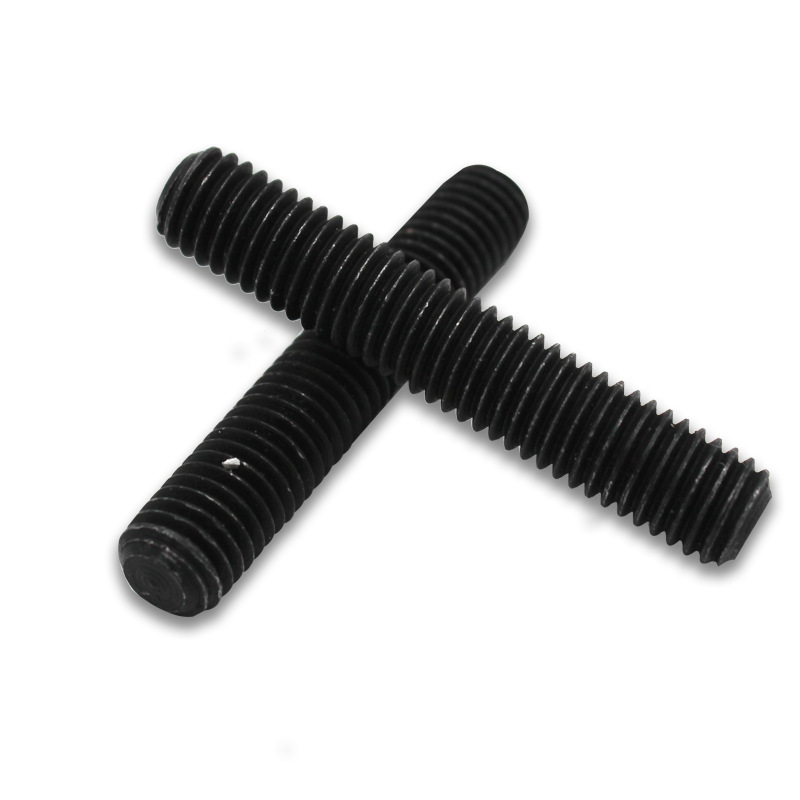

threaded rod anchor
Dec . 24, 2024 11:10 Back to list
threaded rod anchor
Understanding Threaded Rod Anchors A Essential Tool for Structural Applications
Threaded rod anchors play a crucial role in construction and engineering, providing a reliable means of securing various structures and components. As versatile fasteners, these anchors are used across different applications, from simple household projects to complex industrial installations. This article explores the features, benefits, and applications of threaded rod anchors, offering insights into their importance in modern construction.
What is a Threaded Rod Anchor?
A threaded rod anchor is a type of fastener that consists of a long rod with threads running its entire length. Typically made from materials such as steel, stainless steel, or other alloys, these rods are affixed to a structure using nuts and washers. The threaded design allows for easy adjustments and secure connections, making them ideal for applications requiring high tension or load-bearing capabilities.
Features and Benefits
One of the primary advantages of threaded rod anchors is their strength. The continuous thread design increases grip and helps distribute loads evenly, which is critical in heavy-duty applications. This feature is particularly beneficial in construction, where structural integrity is paramount.
Additionally, threaded rod anchors are highly versatile. They can be used to connect a wide range of materials, such as concrete, steel, wood, and masonry. This adaptability makes them suitable for various projects, including anchoring beams, mounting equipment, and securing scaffolding.
Another significant benefit is the ease of installation. Threaded rod anchors can be easily adjusted and secured using standard tools. This not only speeds up the construction process but also allows for modifications if adjustments are needed. In many cases, the ability to easily tighten or loosen a threaded rod connection without disassembling significant portions of a structure can save both time and labor costs.
Applications of Threaded Rod Anchors
threaded rod anchor

Threaded rod anchors have a wide range of applications in several industries
1. Construction In the construction field, these anchors are commonly used to secure structural elements. They can anchor walls, roofs, and heavy machinery, ensuring that these components remain stable and secure under various load conditions.
2. Mechanical Engineering In mechanical applications, threaded rod anchors are used to secure machinery and equipment. Their high strength and durability make them suitable for holding heavy components in place, reducing the risk of equipment failure.
3. Electrical Installations Threaded rod anchors serve as a means to secure electrical conduits and fixtures. Their adaptability allows electricians to easily install and adjust lighting and electrical systems.
4. Scaffolding In the construction of temporary structures like scaffolding, threaded rod anchors provide essential stability and support. They help ensure that workers can operate safely at elevated levels.
5. DIY Projects Beyond industrial applications, threaded rod anchors are popular in DIY home improvement projects. From building shelves to anchoring fences, they offer a reliable solution for securing various installations.
Conclusion
Threaded rod anchors are essential tools in both professional and DIY applications, offering a robust and versatile solution for securing structures and components. Their strength, ease of installation, and adaptability make them invaluable in a variety of fields, from construction to mechanical engineering and beyond. As industries continue to evolve, the reliance on comprehensive anchoring solutions like threaded rod anchors will only increase, supporting the ongoing development of safe and reliable structures.
Whether you are a professional contractor or a weekend DIY enthusiast, understanding the benefits and applications of threaded rod anchors will enhance your ability to tackle a wide range of projects efficiently and effectively. Investing in quality threaded rod anchors can ensure the durability and safety of your installations, proving that sometimes, the simplest solutions are the most effective.
Latest news
-
Hot Dip Galvanized Bolts-About LongZe|High Strength, Corrosion Resistance
NewsJul.30,2025
-
High-Strength Hot Dip Galvanized Bolts - Hebei Longze | Corrosion Resistance, Customization
NewsJul.30,2025
-
Hot Dip Galvanized Bolts-Hebei Longze|Corrosion Resistance&High Strength
NewsJul.30,2025
-
High-Strength Hot-Dip Galvanized Bolts-Hebei Longze|Corrosion Resistance&High Strength
NewsJul.30,2025
-
Hot Dip Galvanized Bolts-Hebei Longze|Corrosion Resistance&High Strength
NewsJul.30,2025
-
Hot Dip Galvanized Bolts - Hebei Longze | Corrosion Resistance, High Strength
NewsJul.30,2025

